BIOPTRON HYPERLIGHT THERAPY IN THE MANAGEMENT OF PAIN
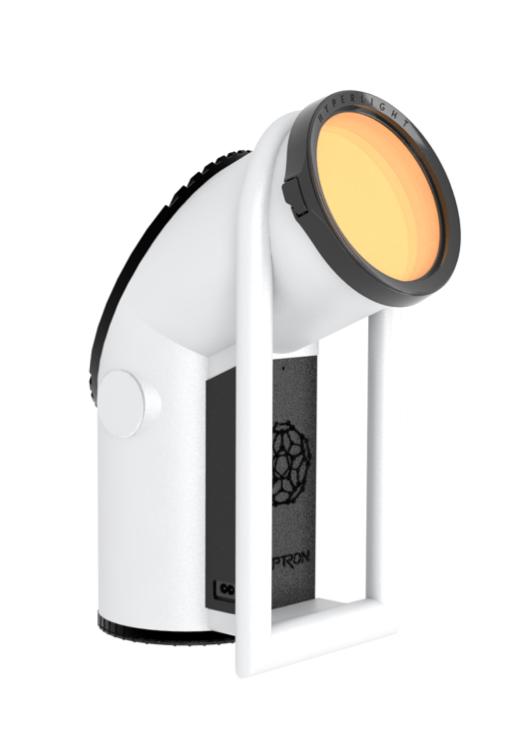



2022 Bioptron
Medical Team
Properties of Bioptron light
Polarized: 95% of polarization, ensures optimal penetration of tissues to stimulate.
Polychromatic: Contains the visible light and a part of the infrared spectrum (350 to 3400nm). Does not include UV.
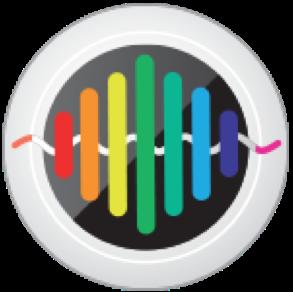


Incoherent: Dynamic penetration without the risk of damaging the tissue as coherent light.

Low energy: Consistent intensity of 2.4J /cm2 per minute safe and precise dose.
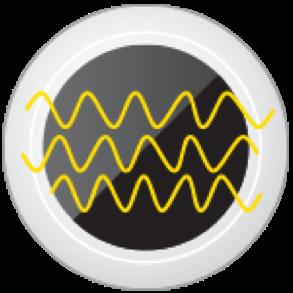
Hyperpolarized: Fullerene (C60) coated filter.


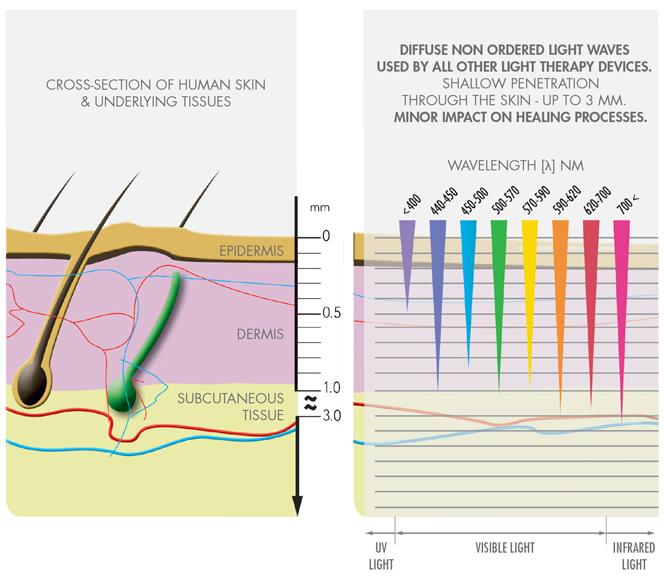
of action Cross section of skin Polarized light penetration Cellular metabolism↑ Changes in the lipid bilayer, membrane surface charges, lipid-protein interaction1 Mitochondria stimulation, augmented cell energy and nucleic acid production2 Microcirculation↑ VEGF production↑3, neoangiogenesis↑5 Production of specific cells and proteins↑ Fibroblast stimulation, expression of type1 procollagen mRNA↑4 Kerotinocyte proliferation↑6 Growth factors↑11, collagen synthesis↑6 Regulation of inflammation↑ Th lymphocyte proliferation↑7 IgM and IgA↑9 Anti-inflammatory cytokine↑ Pro-inflammatory cytokine↓8 Nociceptive signals↓ Pain receptor activation↓ NO synthesis↑10 1. Kertesz I, Fenyö M, Mester E, Bathory G. Hypothetical physical model for laser biostimulation Opt Laser Technol. 1982;14(1):31 32. 2. Tunèr J, Hode L. Laser therapy: clinical practice and scientific background. In Chapt 1 Some basic laser physics Prima Books AB, 2002; 1 44. 3 Akilbekova D, Boddupalli A, Bratlie KM. The effect of polarized light on the organization of collagen secreted by fibroblasts. Lasers Med Sci. 2018;33(3):539 547. 4. Tada K., Ikeda K., and Tomita, K. Effect of polarized light emitting diode irradiation on wound healing. J. Trauma. 2009;67(5):1073 1079. 5. Iordanou P. Effect of visible and infrared polarized light on the healing process of full-thickness skin wounds: an experimental study. Photomed Laser Surg. 2009
6. Samoilova KI. Enhancement of growth promoting activity of human blood on keratinocytes after its irradiation in vivo (transcutaneously) and in vitro with visible and infrared polarized light. Tsitologiia. 2003;45(6):596 605.
Mechanism
Apr;27(2):261-7.
Bioptron


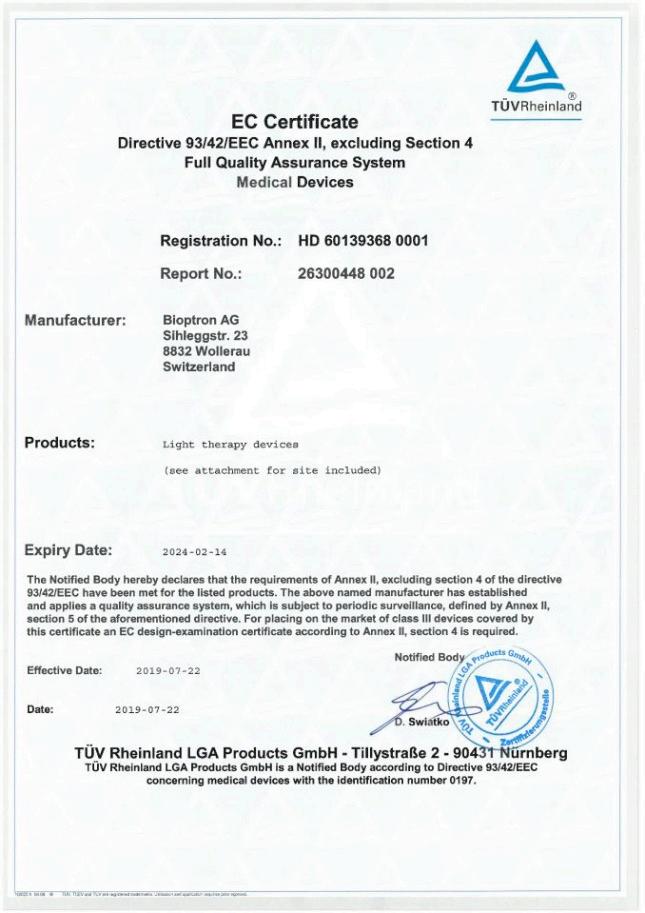



Hyperlight
Bioptron Hyperlight Therapy is clinically tested and medically certified in the treatment of pain. Rheumatoid Arthritis Osteoarthritis Low back pain Shoulder and neck pain Scar tissue Musculoskeletal injuries Carpal tunnel syndrome Muscle spasm Ligament and muscle tear Tendonitis, epicondylitis EN ISO 13485:2016 by TÜV 93/42/EEC-Annex II by TÜV Click on the link on each section to navigate in the document.
Therapy in Pain
Rheumatoid Arthritis


Optional follow-up assessment for 11 patients Final assessment Intermediary assessment Treatment of Rheumatoid Arthritis Gallacchi G (1993) Comparative Study on the Efficacy and Tolerance of Two Different Light Therapy Devices (BIOPTRON Device and Philips Lamp) Used to Treat Patients Suffering From Localized pain States. (Unpublished data from company database) Inclusion Criteria • Age: 20-80 • Have localized pain related to chronic rheumatoid arthritis Outcomes • Localization, intensity and nature of the pain (day/night) • Amount of analgesic needed • Quality of sleep • Pain on pressure • General condition of patient (analog scale) • Functional examination of the joints (neutral-0) and muscles Aim • To compare the efficacy and tolerance of Philips lamp and Bioptron lamp Exclusion Criteria • Cardiac pacemaker • Hypersensitivity to light • Concomitant diseases and drugs (except paracetamol) Day 0 Day 30 Initial assessment Day 14 Day 3 (n=68) Group A: Bioptron Lamp (n=33) Group B: Philips Lamp Polarized, twice a day for 10 minutes Study • Multicenter, randomized (2:1) trial Nonpolarized, twice a day for 15 minutes

Treatment of Rheumatoid Arthritis Gallacchi G (1993) Comparative Study on the Efficacy and Tolerance of Two Different Light Therapy Devices (BIOPTRON Device and Philips Lamp) Used to Treat Patients Suffering From Localized pain States. (Unpublished data from company database) Parameters Bioptron Lamp Philips Lamp PAIN Day 0 Day 3 Day 14 Significance (p value) Day 0 Day 3 Day 14 Significance (p value) Day (0-3) Day (0-14) Day (0-3) Day (0-14) Pain types Pain at rest 46 42 25 0.2188 0.0001 20 21 8 1.0000 0.0018 Pain on motion 64 58 52 0.0313 0.0005 29 31 25 0.5000 0.2891 Tenseness 26 21 12 0.1797 0.0005 17 14 8 0.3750 0.0225 Radiations 26 22 10 0.2188 0.0004 9 8 6 na 0.2500 Pain intensity Severe/unbearable 15 6 2 0.0000 0.0000 4 4 0 1.0000 0.0001 Moderate 52 53 26 25 24 15 Mild 1 8 35 4 5 11 na: not applicable, Significance: p<0.05, *: significant between two groups * *

Treatment of Rheumatoid Arthritis Gallacchi G (1993) Comparative Study on the Efficacy and Tolerance of Two Different Light Therapy Devices (BIOPTRON Device and Philips Lamp) Used to Treat Patients Suffering From Localized pain States. (Unpublished data from company database) Parameters Bioptron Lamp Philips Lamp Day 0 Day 3 Day 14 Significance (p value) Day 0 Day 3 Day 14 Significance (p value) Day (0-3) Day (0-14) Day (0-3) Day (0-14) Pain on pressure No 50 50 59 27 28 30 Yes 18 18 8 na 0.0117 6 5 2 na 0.1250 Pressosensitive 16 16 7 na na 5 5 2 na na Muscle tone Painful 47 40 21 0.0215 0.0000 27 24 13 0.3750 0.0018 Painfree 10 15 28 2 4 8 NAD 11 12 17 4 5 11 na: not applicable, Significance: p<0.05

Study on the Efficacy and Tolerance of Two Different Light Therapy Devices (BIOPTRON Device and Philips Lamp) Used to Treat Patients Suffering From
Parameters Bioptron Lamp Philips Lamp FUNCTION (Neutral-0 method) Degree of improvement (day 14) < 50% 20 7 ≥ 50% 1 1 ≥ 100% 1 1 Complete remission 13 4 40% of the patients
Treatment of Rheumatoid Arthritis Gallacchi G (1993) Comparative
Localized pain States. (Unpublished data from company database)

Treatment of Rheumatoid Arthritis Gallacchi G (1993) Comparative Study on the Efficacy and Tolerance of Two Different Light Therapy Devices (BIOPTRON Device and Philips Lamp) Used to Treat Patients Suffering From Localized pain States. (Unpublished data from company database) Parameters Bioptron Lamp Philips Lamp SLEEP QUALITY Day 0 Day 3 Day 14 Significance (p value) Day 0 Day 3 Day 14 Significance (p value) Day (0-3) Day (0-14) Day (0-3) Day (0-14) Time to fall asleep ≤ 15 minutes 38 46 45 0.0215 0.1185 19 24 25 0.0625 0.1094 > 15 minutes 30 22 22 14 9 7 Awakenings at night ≤ 3 times 53 56 61 0.3750 0.0215 23 26 28 0.2500 0.1250 > 3 times 15 12 5 10 7 4 Significance: p<0.05

Treatment of Rheumatoid Arthritis Gallacchi
Comparative Study on the Efficacy and Tolerance of Two Different Light Therapy Devices (BIOPTRON Device and Philips Lamp) Used to Treat Patients Suffering From Localized pain States. (Unpublished data
company database) Parameters Bioptron Lamp Philips Lamp GENERAL CONDITION Day 0 Day 3 Day 14 Significance (p value) Day 0 Day 3 Day 14 Significance (p value) Day (0-3) Day (0-14) Day (0-3) Day (0-14) Very bad 2 3 1 0.0000 0.0000 2 2 0 0.0215 0.0000 Bad 48 29 7 22 16 8 Fair 13 25 27 7 11 9 Good 5 10 27 2 4 10 Very good 0 1 5 0 0 5 Significance: p<0.05
G (1993)
from

Treatment of Rheumatoid Arthritis
Efficacy
Tolerance
Used to Treat Patients
Parameters Bioptron Lamp Philips Lamp Physicians (%) Patients (%) Physicians (%) Patients (%) Efficacy Good 41.2 41.2 39.4 36.4 Fair 30.9 32.4 30.3 36.4 Inadequate 27.9 26.4 30.3 27.3 Tolerance Good 94.1 94.1 87.8 82.4 Fair 0 0 9.1 12.1 Inadequate 5.9 5.9 3 3 Both devices are considered effective and well tolerated, Bioptron is significantly more efficacious in pain related parameters.
Gallacchi G (1993) Comparative Study on the
and
of Two Different Light Therapy Devices (BIOPTRON Device and Philips Lamp)
Suffering From Localized pain States. (Unpublished data from company database)

Final assessment
of Rheumatoid Arthritis Karadzic M (2001) Polarized Light in Rheumatoid Arthritis treatment. (Unpublished data from company database) Outcomes • Duration of morning stiffness (mins) • Pain (VAS) • Number of involved joints • Circumference of involved joints (mm) • Motor grip strength (mmHg) • Range of motion (degrees) • Manual muscular test for quadriceps (0-5) • Walking distance speed (seconds) Aim • To find out the analgesic, anti-inflammatory and antioedematous effects of Bioptron polarized light therapy in rheumatoid arthritis. Initial assessment (n=60) Balneophysical Therapy + Bioptron (n=60) Balneophysical Therapy Bioptron is applied for 8 minutes to hand and knees
Treatment

Treatment of Rheumatoid Arthritis Clinical parameters Significance between groups Duration of morning stiffness 0,00218 Subjective pain estimation 5,818E-09 Number of involved joints 1,564 Motor grip hand strength 0,00093 Circumference of Joints 0,0348 Range of motions 0,00218 Muscle strength quadriceps 0,00563 Walking distance speed 0,00273 Karadzic M (2001) Polarized Light in Rheumatoid Arthritis treatment. (Unpublished data from company database) Improvement Balneotherapy + Bioptron Balneotherapy Worse 0 % 3.3 % No change 23.3 % 25.3 % Moderate 26.6 % 15.1 % Good 23.3 % 36.7 % Very good 26.3 % 19.6 % Total 76.6 % 21.6 % Bioptron polarized light therapy can be combined with other methods of treatment as an optimal support without any risks.
Osteoarthritis


Final assessment Treatment of osteoarthritis
Drobyshev,
Koneva, E.
The efficacy of the comprehensive use of naphthalan and non selective chromotherapy in the treatment of patients
Inclusion Criteria • Age: 40-69 • Primary deforming OA of the knee joints, grade 1-3 Outcomes • Oxford Knee Score • WOMAC arthritis Index • 15-meter walk test • Lequesne Index (severity of OA) • VAS pain (0-100mm) • Short Form-36 (QOL) Aim • To assess comprehensive treatment in patients with osteoarthritis of the knee joints, including the combined use of refined naphthalan applications and irradiation with incoherent polarized Bioptron light Exclusion Criteria • Concomitant diseases and drugs (steroids) Day 0 Week 2 Initial assessment (n=34) Group 1: Naphthalan + Bioptron (n=30) Group 2: Naphthalan 20 cm, 6 minutes, 5 times a week Study • RCT
Abramovich, S. G.,
V. A.,
S., & Makhova, A. A. (2020).
with gonarthrosis. Drug Research, 70(04), 170 173.
Treatment of osteoarthritis
Abramovich, S. G., Drobyshev, V. A., Koneva, E. S., & Makhova, A. A. (2020). The efficacy of the comprehensive use of naphthalan and non selective chromotherapy in the treatment of patients with gonarthrosis. Drug Research, 70(04), 170 173. *: p<0.05

25.22 26.99 20.28 25.2 0 5 10 15 20 25 30 35 40 15 meter walk test * Before Test group After Before Control group After Changes in 15 meter walk test 66.81 69.73 49.35 63.12 0 10 20 30 40 50 60 70 80 90 100 VAS (0100) * Before Test group After Before Control group After Changes in VAS
Treatment of osteoarthritis

The efficacy of the comprehensive use of naphthalan and non selective chromotherapy in the treatment of patients
36.11 35.78 28.46 31.63 0 5 10 15 20 25 30 35 40 45 50 Oxford Knee Score * Before Test group After Before Control group After Changes in Oxford Knee Score 123.23 126.92 107.64 120.45 0 20 40 60 80 100 120 140 160 WOMAC Arthritis Index * Before Test group After Before Control group After Changes in WOMAC Arthritis Index Local knee joint naphthalan applications combined with Bioptron proved to be an effective rehabilitation method for patients with gonarthrosis.
Abramovich, S. G., Drobyshev, V. A., Koneva, E. S., & Makhova, A. A. (2020).
with gonarthrosis. Drug Research, 70(04), 170 173. *: p<0.05
Low Back Pain

Treatment

After treatment 1 month after the treatment
Mariyana & Ruseva, Zhenya & Filkova, Silvia. (2017). The effect of polarized polychromatic non coherent light (Bioptron) therapy on patients with lower back pain. Scripta Scientifica
Inclusion Criteria • 18-55 years • Suffered from lower back pain • Diagnosed via imaging • People who hadn’t had surgery Outcomes • Thomayer test (cm) • Schober test (cm) • VAS • Quality of life; Roland-Morris questionnaire Aim • To study the effect of polarized light on pain, motor activity and quality of life in patients with vertebrogenic lower back pain and to compare it with other methods used in practice. Exclusion Criteria • Cardiac pacemaker • Presence of serious spinal pathology such as tumors, compression fractures, • Concomitant diseases and drugs Day 0 Before treatment (n=30) Treatment Group: Standard treatment + Bioptron (n=30) Control group: Standard treatment Bioptron: once a day for 10 minutes Standard: once a day low frequency magnetic field (LFMF) and ultrasound
of low back pain due to vertebral disc pathologies Mihaylova,
Salutis Publicae. 3. 23. 10.14748/sssp.v3i1.2165.
Treatment of low back pain due to vertebral disc pathologies
Change in VAS scores
Change in Roland-Morris disability questionnaire
Significant changes are reported for both groups before and after treatment, with a statistically significant superiority of group that had Bioptron additionally.


Mihaylova, Mariyana & Ruseva, Zhenya & Filkova, Silvia. (2017). The effect of polarized polychromatic non coherent light (Bioptron) therapy on patients with lower back pain. Scripta Scientifica Salutis Publicae. 3. 23. 10.14748/sssp.v3i1.2165.

* * * *
Treatment of low back pain due to vertebral disc pathologies
Change in Schober test *
Changes in pain
Change in Thomayer test
Significant changes are reported for both groups before and after treatment, with a statistically significant superiority of group that had Bioptron additionally.

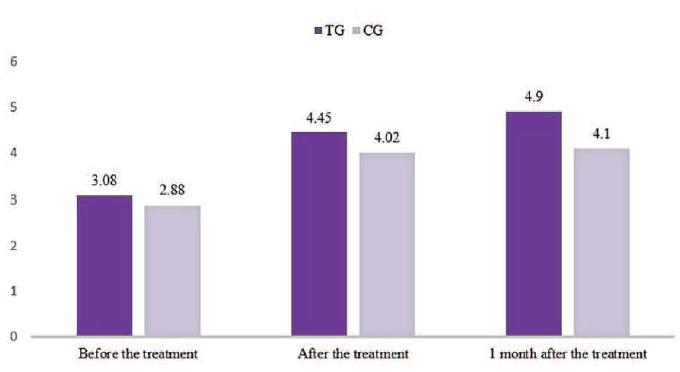
Mihaylova, Mariyana & Ruseva, Zhenya & Filkova, Silvia. (2017). The effect of polarized polychromatic non coherent light (Bioptron) therapy on patients with lower back pain. Scripta Scientifica Salutis Publicae. 3. 23. 10.14748/sssp.v3i1.2165.

*

Final assessment
of non-specific low back pain
Effectiveness of polarized polychromatic light therapy on myofascial trigger points in chronic non specific low back pain: a single blinded randomized
Inclusion Criteria • 25-45 years • Chronic NSLBP • At least one active trigger point Outcomes • Numerical pain rating (0-10) • Pain pressure threshold • Roland-Morris disability questionnaire • Lumbar range of motion Aim • To investigate the effectiveness of PL on pain intensity, pain sensitivity of active myofascial trigger points in gluteus medius and quadratus lamborum muscles, back disability, and lumbar range of motion in chronic NSLBP. Exclusion Criteria • Severe comorbidities, presence of serious spinal pathology such as tumors, compression fractures • Pregnancy Day 0 Initial assessment (n=21) Treatment Group: Standard treatment + Bioptron compact (n=21) Control group: Standard treatment + sham light Near Infrared 880 ± 30 nm and Red 640± 30 nm, power density of 40 mW/cm2 power supply of 100–240 V, 95 % degree of polarization, frequency of 50 HZ and energy density/5 min: 8 J/cm2 4 weeks
Treatment
Shiryan, G.T., Amin, F.S. & Embaby, E.A.
controlled trial. Bull Fac Phys Ther 27, 33 (2022). https://doi.org/10.1186/s43161 022 00085 9
Treatment


of non-specific
pain
Effectiveness of polarized polychromatic light therapy on myofascial trigger points in chronic non specific low back pain: a single blinded randomized
trial.
9
numeric pain rating scale, RMDQ: roland morris disability questionnaire 7 7 2 4 0 1 2 3 4 5 6 7 8 9 10 NPRS (010) * Changes in pain Before Test group After Control group Before After 18 14 5 8 0 2 4 6 8 10 12 14 16 18 20 RMDQ Changes in disability Before Test group After Control group Before After Application of the device Linear polarized polychromatic light therapy in the range of red and near-infrared rays improves pain intensity and pain sensitivity of myofascial trigger points in chronic NSLBP
low back
Shiryan, G.T., Amin, F.S. & Embaby, E.A.
controlled
Bull Fac Phys Ther 27, 33 (2022). https://doi.org/10.1186/s43161 022 00085
NPRS:
Treatment

After treatment 1 month after the treatment
pain
Iacob, George Sebastian & Pantyo, Valerij & Diana, Vrabie & Zelenovic, Milan & Alexandru, Măzăreanu. (2022). Short Term Therapeutic Effects Of Bioptron Light Therapy And Dry Needling For The Treatment Of Low Back Myofascial Pain In Amateur Sport Players. Inclusion Criteria • 20-37 years, amateur sport players • Active myofascial pain located in the lower back area • >10 weeks Outcomes • Visual examination, • Finger-to-floor distance, Modified Schober’s test and evaluation of the pain during palpation using visual analogue scale Aim • To identify and present the short-term effects of a combined treatment for the low back myofascial pain: the systematic use of the Bioptron light therapy and dry needling. Exclusion Criteria • Contraindications for dry needling Day 0 Before treatment (n=18) Group A: Dry Needling (n=18) Group B: Dry Needling + Bioptron Medolight, 10-15 minutes Week 4
of low back
in sport players

pain
Iacob, George Sebastian & Pantyo, Valerij & Diana, Vrabie & Zelenovic, Milan & Alexandru, Măzăreanu. (2022). Short Term Therapeutic Effects Of Bioptron Light Therapy And Dry Needling For The Treatment Of Low Back Myofascial Pain In Amateur Sport Players. VAS (mm) Before treatment After treatment Significance Group A (dry needle only) 69.16±11.61 24.56±6.662 p=0.000 Group B (Needle+Bioptron) 73.22±9.10 22.50±6.732 p=0.000 Finger to floor (cm) Before treatment After treatment Significance Group A (dry needle only) 17.16±3.66 5.3±1.63 p=0.000 Group B (Needle+Bioptron) 16.77±4.05 3.38±2.25 p=0.000 Modified Schober (cm) Before treatment After treatment Significance Group A (dry needle only) 3.57±0.820 4.68±0.460 p=0.000 Group B (Needle+Bioptron) 3.04±0.676 5.06±0.351 p=0.000
Treatment of low back
in sport players

of low back pain
sport players Iacob, George Sebastian & Pantyo, Valerij & Diana, Vrabie & Zelenovic, Milan & Alexandru, Măzăreanu. (2022). Short Term Therapeutic Effects Of Bioptron Light Therapy And Dry Needling For The Treatment Of Low Back Myofascial Pain In Amateur Sport Players. *: p=0.006 **:p=0.007 69.1 73.2 24.5 22.5 0 10 20 30 40 50 60 70 80 VAS (0100) Week 0 Group A Week 4 Week 0 Group B Week 4 Changes in Pain 17.1 16.7 5.3 3.3 0 5 10 15 20 25 FTF distance (cm) * Week 0 Group A Week 4 Week 0 Group B Week 4 Changes in finger to floor distance 3.57 3.04 4.68 5.06 0 1 2 3 4 5 6 7 8 9 10 Modified Schober (cm) ** Week 0 Group A Week 4 Week 0 Group B Week 4 Changes in Modified Schober test The combination of Bioptron therapy and dry needling therapy reduced the level of pain during palpation and increased functionality.
Treatment
in
Musculoskeletal Neck and Shoulder Pain







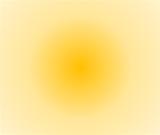

Treatment of musculoskeletal neck and shoulder pain M.F.Ballyzek, V.Vesovic Potic, X.He, A.Johnston: Efficacy of polarized, polychromatic, non coherent light in the treatment of chronic musculoskeletal neck and shoulder pain. Unpublished material, BIOPTRON AG, Wollerau, Switzerland (2005) Inclusion Criteria • 18-65 years • Musculoskeletal pain in neck and shoulder (muscle spasm, sprain, strain) for >30 days • Degree of pain in VAS ≥50/100mm • No analgesics before the treatment and 48 hours after the 3rd treatment. Outcomes • Primary outcome: VAS (100mm) • Secondary outcomes: ROM (linear range of motion) Subject satisfaction (0-5) Aim • To determine efficacy of polarized light in the temporary relief of chronic musculoskeletal neck/shoulder pain Study • Multicenter, randomized, double-blind placebo-controlled. Test Group: Bioptron Placebo group: Sham light Before treatment Day 3 (n=60) (n=59) Day 1 After treatment After treatment Before treatment After treatment Before treatment Once a day, 10 minutes & 48 hours follow-up after 3rd treatment Day 2 :Represents the treatment period
Treatment of musculoskeletal neck and shoulder pain

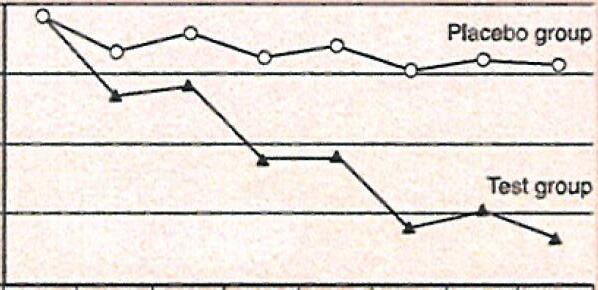
V.Vesovic Potic, X.He, A.Johnston: Efficacy of polarized, polychromatic, non coherent light in the treatment of chronic musculoskeletal neck and shoulder pain. Unpublished material,
*: P<0.0001 Mean VAS scores for three day treatment period 70 60 50 40 30 Mean VAS score (0100mm) PreDay 1 PreDay 2 PreDay 3 PostDay 1 PostDay 2 PostDay 3 +24 hours +48 hours Efficacy success criteria: ≥30% improvement in VAS 12 82 0 10 20 30 40 50 60 70 80 90 Achieved success criteria (%) Placebo Group Test Group *
M.F.Ballyzek,
BIOPTRON AG, Wollerau, Switzerland (2005)


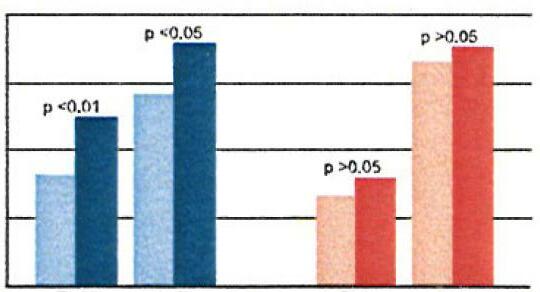


musculoskeletal neck
shoulder pain
Treatment of
and
of polarized, polychromatic,
the treatment of chronic musculoskeletal neck and shoulder pain. Unpublished
Change in neck motion of range 50 ROM (degrees) Right Test group Left Right Control group Left Change in shoulder motion of range 175 170 165 160 155 ROM (degrees) Right Test group Left Right Control group Left Pre-treatment day 1 Post-treatment day 3 Pre-treatment day 1 Post-treatment day 3
M.F.Ballyzek
V.Vesovic Potic, X.He, A.Johnston: Efficacy
non coherent light in
material, BIOPTRON AG, Wollerau, Switzerland (2005)
Treatment of musculoskeletal neck and shoulder pain

V.Vesovic
A.Johnston: Efficacy of polarized, polychromatic, non coherent light in the treatment of chronic musculoskeletal neck and shoulder pain. Unpublished material, BIOPTRON AG, Wollerau, Switzerland (2005) *: P<0.0001 15 90 0 10 20 30 40 50 60 70 80 90 100 Patient satisfaction (%) Placebo Group Test Group * Patient satisfaction ratings 51 88 0 10 20 30 40 50 60 70 80 90 100 Physical activity (%) Placebo Group Test Group * Patient activity 48 hours after the last treatment Patients received Bioptron therapy
statistically significant improvements in all the efficacy parameters
any adverse events.
M.F.Ballyzek,
Potic, X.He,
showed
without
Scar Tissue


Treatment of Burn Scars
Hamada,
Effect of orange polarized light on post burn pediatric
(n=15) Control group: Standard scar management (n=15) Treatment group: Standard + Bioptron 4 weeks From 10 cm, 15 minutes medical filter + 15 minutes orange filter, 3 times a week Aim • To evaluate the effect of orange filtered polarized polychromatic light on post burn pediatric scar. Day 0 Final assessment Initial assessment Study • Single-blind RCT Outcomes Vancouver Scar Scoring (0-13) • Vascularity • Pigmentation, • Height/thickness • Pliability Inclusion Criteria • Children 3-7 years old • Hypertrophic burn scar (≥2 months post healing) Exclusion Criteria • Chronic skin conditions and keloid history
Abd Elrashid, N. A., Sanad, D. A., Mahmoud, N. F.,
H. A., Abdelmoety, A. M., & Kenawy, A. M. (2018).
scar: a single blind randomized clinical trial. Journal of Physical Therapy Science, 30(10), 1227-1231.

of Burn Scars
orange polarized light
VSS Before treatment After treatment Significance Group A (standard only) 10.66 ± 2.01 8.8 ± 1.61 p<0.05 Group B (standard+Bioptron) 8.92 ± 2.36 4.93 ± 1.86 p<0.05 * 17.44 44.73 0 10 20 30 40 50 60 Improvement in VSS (%) Group A Group B Bioptron hyperlight therapy and orange filter showed significantly better results in the treatment of burn scars in children.
Treatment
Abd Elrashid, N. A., Sanad, D. A., Mahmoud, N. F., Hamada, H. A., Abdelmoety, A. M., & Kenawy, A. M. (2018). Effect of
on post burn pediatric scar: a single blind randomized clinical trial. Journal of Physical Therapy Science, 30(10), 1227-1231.*: p<0.05
Treatment of Burn Scars: Range of Motion

pediatric
Flexion ROM Before treatment After treatment Significance Group A (standard only) 59.27±7.04 63.6±5.87 p=0.001 Group B (standard+Bioptron) 60.87±5.96 67.67±4.24 p=0.001 Extension ROM Before treatment After treatment Significance Group A (standard only) 20.47±3.25 22.07±3.24 p=0.001 Group B (standard+Bioptron) 22.73±3.20 26.27±3.22 p=0.001 *
polarized light has a special and beneficial effect on improving the range
motion in children
burn. *
Abd El-Rashid NA, Sanad DA, Ayoub HS, Elhenawy AN. Effect of orange polarized light on Metacarpophalyngeal range of motion in
hand burn: a single blind randomized trial. Bioscience Res. 2019;16(3):2417–22..*: p<0.05
Orange filtered
of
with hand
Musculoskelatal Injuries


After treatment
of acute ankle sprains
D, Papadopoulos C, Lamnisos D, Stasinopoulos I. The use of Bioptron light (polarized, polychromatic, non coherent) therapy for the treatment of acute ankle sprains. Disabil
Inclusion Criteria • 18-35 years • Acute (24-96 hours) Grade II (partial ligament tear) ankle sprain • Participated in sports activities at least three times per week during the past 2 years Outcomes • Primary: VAS (0-10) • Secondary: Ankle edema (circumference) Ankle ROM Aim • To investigate the efficacy of Bioptron light therapy for the treatment of acute ankle sprains Exclusion Criteria • Bone fracture, grade III sprain • History of previous sprain • Other comorbidities Day 0 Before treatment (n=27) Test Group: Cryotherapy + Bioptron (n=23) Control group: Cryotherapy Bioptron: once a day for 10 minutes, 5 days Cryotherapy: 20 min of continuous ice treatment performed every 2 hours for 5 days, self administered Study • A parallel group, single-blind, randomized, controlled study Day 5
Treatment
Stasinopoulos
Rehabil. 2017 Mar;39(5):450 457. doi: 10.3109/09638288.2016.1146357. Epub 2016 Mar 4. PMID: 26939828.

acute ankle sprains Stasinopoulos D, Papadopoulos C, Lamnisos D, Stasinopoulos I. The use of Bioptron light (polarized, polychromatic, non coherent) therapy for the treatment of acute ankle sprains. Disabil Rehabil. 2017 Mar;39(5):450 457. doi: 10.3109/09638288.2016.1146357. Epub 2016 Mar 4. PMID: 26939828. *: p<0.0005 6.66 6.62 4.46 5.34 0 1 2 3 4 5 6 7 8 9 10 VAS (010) * Day 0 Test group Day 5 Day 0 Control group Day 5 2.67 1.52 0 1 2 3 4 5 6 7 8 9 10 Decrease in edema * Test group Control group 2 1.1 0 1 2 3 4 5 Increase in dorsiflexion ROM * Test group Control group 1.8 0.9 0 1 2 3 4 5 Increase in plantar flexion ROM Test group Control group * Changes in VAS between day 0 to day 5 Changes in edema Changes in ROM Bioptron therapy with cryotherapy showed statistically significant improvements in the treatment of acute ankle sprains.
Treatment of


After treatment + 6 months follow-up Treatment of Sudeck Atrophy Petrovic, D., Zlatkovic Svenda, M., & Lazovic, B. (2018). Could the complex regional pain syndrome (Sudeck atrophy), emerged as a distal radius at the typical site fracture complication, be prevented by physical therapy?. Annals of Physical and Rehabilitation Medicine, 61, e114 Inclusion Criteria • Patients with Distal Radial Fractures from Belgrade to be treated with physiotherapy Outcomes • Pain VAS (0-100) • ROM • Fist forming capacity • 6 months: CRPS development Aim • To evaluate the use of Bioptron combined with conventional treatment after Distal Radial Fractures in gerontology and to follow up patients for Complex Regional Pain Syndrome emergence Day 0 Before treatment (n=26) Group 2: Cryotherapy + Exercise + Bioptron (n=26) Group 1: Cryotherapy + Exercise Treatment started immediately after removal of the plaster. Bioptron: once a day, 10 minutes, from 10cm Study • A parallel group, single-blind, randomized, controlled study Day 15 Day 7 Mid-treatment
Treatment

Could the complex regional pain syndrome
as a distal radius at the typical site fracture complication,
33.1 16.2 2.1 0 5 10 15 20 25 30 35 40 Pain (0100) Day 0 Day 7 Group 2 (+Bioptron) Day 15 37.7 19.2 7.5 0 5 10 15 20 25 30 35 40 Pain (0100) Day 0 Day 7 Group 1 Day 15 Changes in VAS between day 0 to day 15 * 37.4 42.3 47.3 56.1 0 10 20 30 40 50 60 70 ROM Supination * Changes in Range of Motion Day 7 Day 15 Day 7 Day 15 49.7 52.1 60 63.8 0 10 20 30 40 50 60 70 ROM Pronation Day 7 Day 15 Day 7 Day 15
of Sudeck Atrophy Petrovic, D., Zlatkovic Svenda, M., & Lazovic, B. (2018).
(Sudeck atrophy), emerged
be prevented by physical therapy?. Annals of Physical and Rehabilitation Medicine, 61, e114 *p < 0.05, **p < 0.01.
Treatment of Sudeck Atrophy

Could the complex regional pain syndrome (Sudeck
emerged as a distal radius at the typical site fracture complication, be prevented by physical therapy?. Annals of Physical and Rehabilitation Medicine, 61, e114 *p < 0.05, **p < 0.01. 15.4 0 0 2 4 6 8 10 12 14 16 18 20 CRPS occurrence (%) Group 1 Group 2 * Occurrence of complex regional pain syndrome in 6 months 61.5 73.1 0 10 20 30 40 50 60 70 80 Fist forming capacity (%) Group 1 Group 2 Complete hand fist-forming capacity in 6 months
combined with conventional therapy in patients with DRF appears a better choice and treatment option for pain control improvement, and a range of motion achievement. It also significantly reduces CRPS occurrence after DRF in gerontology.
Petrovic,
D., Zlatkovic Svenda, M., & Lazovic, B. (2018).
atrophy),
Bioptron
Carpal Tunnel Syndrome


After treatment
Carpal Tunnel Syndrome
SA, Rayegani SM, Rezaei S, Sedighipour
Bahrami MH, Eliaspour
Karimzadeh A. The effect of polarized polychromatic noncoherent light (bioptron) therapy on patients with carpal tunnel syndrome.
PMID:
PMCID:
Inclusion Criteria • Mild/moderate CTS >6 months • Participated in sports activities at least three times per week during the past 2 years Outcomes • VAS (0-10) • Electrophysiological parameters Aim • To investigate the clinical efficacy of Bioptron therapy in carpal tunnel syndrome concerning short term pain relief and nerve conduction characteristic improvement Exclusion Criteria • Secondary entrapment neuropathies Week 0 Before treatment (n=27) Test Group: Wrist split + Bioptron (n=23) Control group: Wrist split Bioptron: from 5-10cm in total 10 times for the last 4 weeks of treatment, 8 minutes Study • A parallel controlled, blind, randomized study Week 8 Week 4
Treatment of
Raeissadat
L,
D,
J Lasers Med Sci. 2014 Winter;5(1):39 46.
25606338;
PMC4290517.
Treatment of Carpal Tunnel Syndrome

Changes in VAS Changes in distal sensory latency

 Raeissadat SA, Rayegani SM, Rezaei S, Sedighipour L, Bahrami MH, Eliaspour D, Karimzadeh A. The effect of polarized polychromatic noncoherent light (bioptron) therapy on patients with carpal tunnel syndrome. J Lasers Med Sci. 2014 Winter;5(1):39 46. PMID: 25606338; PMCID: PMC4290517.
Raeissadat SA, Rayegani SM, Rezaei S, Sedighipour L, Bahrami MH, Eliaspour D, Karimzadeh A. The effect of polarized polychromatic noncoherent light (bioptron) therapy on patients with carpal tunnel syndrome. J Lasers Med Sci. 2014 Winter;5(1):39 46. PMID: 25606338; PMCID: PMC4290517.
There was no meaningful difference between disease severity changes in both groups.

treatment
After
Treatment of carpal tunnel syndrome with polarized polychromatic noncoherent light (Bioptron light): a preliminary, prospective, open
228. Inclusion Criteria • Unilateral carpal tunnel syndrome • Mild to moderate nocturnal pain, and paraesthesia for>3 months Outcomes • Participants’ global assessments of nocturnal pain and paraesthesia Aim • To assess the efficacy of polarized polychromatic noncoherent light (Bioptron light) in the treatment of idiopathic carpal tunnel syndrome Exclusion Criteria • Secondary entrapment neuropathies • Regular analgesic or antiinflammatory drugs Week 0 Before treatment (n=25) Bioptron Bioptron: from 5-10cm, 3 times a week, 6 minutes, used as monotherapy 6 months follow up Study • Open case series Week 4
Treatment of Carpal Tunnel Syndrome Stasinopoulos, D., Stasinopoulos, I., & Johnson, M. I. (2005).
clinical trial. Photomedicine and Laser Therapy, 23(2), 225

of Carpal Tunnel Syndrome Stasinopoulos, D., Stasinopoulos, I., & Johnson, M. I. (2005). Treatment of carpal tunnel syndrome with polarized polychromatic noncoherent light (Bioptron light): a preliminary, prospective, open clinical trial. Photomedicine and Laser Therapy, 23(2), 225 228. Nocturnal Pain Paraesthesia 4 weeks 6-month follow up 4 weeks 6-month follow up Worse 0 0 0 0 No change 2 (8%) 0 4 (16%) 2 (8%) Slightly better 6 (24%) 3 (12%) 5 (20%) 2 (8%) Much better 12 (48%) 13 (52%) 13 (52%) 14 (56%) No symptoms 5 (20%) 9 (36%) 3 (12%) 7 (28%) 0 8 24 48 20 Nocturnal pain after 4 weeks Worse No change Slightly better Much better No symptoms 0 16 20 52 12 Paraesthesia after 4 weeks Worse No change Slightly better Much better No symptoms The efficacy of Bioptron light applied as monotherapy indicated a positive clinical effect on nocturnal pain relief and paraesthesia for the treatment of carpal tunnel syndrome.
Treatment
Treatment of Carpal Tunnel Syndrome: Pregnant women
Dimitrios, S., & Stasinopoulos, L.

After treatment
Outcomes
VAS
VAS
Finger
Comorbidities,
Week 0
treatment (n=25) Bioptron Bioptron: from 5-10cm, 5 times a week, 6 minutes, used as monotherapy 1 month follow up
Open
Week 2
(2017). Treatment of carpal tunnel syndrome in pregnancy with polarized polychromatic non coherent light (Bioptron light): a preliminary, prospective, open clinical trial. Laser therapy, 26(4), 289 295. Inclusion Criteria • Pregnant women with CTS diagnosed with standard electrophysiological criteria, which were motor distal latency and sensory antidrotic nerve conduction velocity.
•
pain (0-10) •
paraesthesia (0-10) •
pinch strength (Jamar Dynamometer) Aim • To assess the efficacy of polarized polychromatic noncoherent light • (Bioptron light) in the treatment of Carpal Tunnel Syndrome (CTS) in pregnancy. Exclusion Criteria •
history of CTS
Before
Study •
case series



Treatment of Carpal Tunnel Syndrome Before treatment 2 weeks 1-month follow up Pain 8.71±1.64 5.834±2.37 3.47±2.45 Paraesthesia 8.66±1.55 5.536±2.28 3.27±2.21 Finger pinch strength 4.22 ± 1.11 7.56 ± 1.39 9.23 ± 1.34 The efficacy of Bioptron light applied as monotherapy indicated a positive clinical effect on nocturnal pain relief, paraesthesia and finger pinch strength from carpal tunnel syndrome in pregnancy. Dimitrios, S., & Stasinopoulos, L. (2017). Treatment of carpal tunnel syndrome in pregnancy with polarized polychromatic non coherent light (Bioptron light): a preliminary, prospective, open clinical trial. Laser therapy, 26(4), 289 295. *: p=0.000 * 8.71 5.83 3.47 0 2 4 6 8 10 Pain (010) Before 2 weeks Pain 6 weeks * * 8.66 5.53 3.27 0 2 4 6 8 10 Paraesthesia (0 10) Before 2 weeks Paraesthesia 6 weeks * 4.22 9.23 0 2 4 6 8 10 Pinch Strength Before 2 weeks Pinch Strength 6 weeks *
Lateral Epicondylitis Patellar Tendinopathy Rotator Cuff Tendinopathy

Tendinopathies

After treatment
The use of
as therapy for acute
epicondylalgia: a pilot study. Photomedicine and Laser Therapy, 23(1), 66 69. Inclusion Criteria •
epicondylitis for
weeks Outcomes • VAS pain (0-10) • VAS function (0-10) • Grip strength (dynamometer)
Criteria •
Week 0
treatment (n=25) Bioptron Study
Week 4 B2, 6 minutes to 2 location, from 5-10cm, 3 times per week Results
Treatment of Lateral Epicondylitis Stasinopoulos, D. (2005).
polarized polychromatic non coherent light
tennis elbow/lateral
Unilateral lateral
<6
Aim • To assess the effects of Bioptron in the treatment of acute (duration less than 6 weeks) tennis elbow. Exclusion
Comorbidities such as: cubital osteoarthritis, carpal or radial-tunnel syndrome, rheumatoid arthritis, severe cervical spondylosis or cervical radicular syndrome
Before
• Open case series
• VAS pain: ∆3.84, p=0.001 • VAS function: ∆4.23, p<0.004 • Grip strength: ∆4.23, p<0.001 Bioptron applied as monotherapy, reduced patients’ symptoms with acute tennis elbow.

After treatment + 3 months follow up
of Lateral Epicondylitis
D., Stasinopoulos, I., Pantelis, M., & Stasinopoulou, K. (2009). Comparing the effects of exercise program and low level laser therapy with exercise program and polarized polychromatic non coherent light (bioptron light) on the treatment of lateral elbow tendinopathy. Photomedicine and laser surgery, 27(3), 513 520. Inclusion Criteria • Clinically diagnosed LET for >4 weeks • >18 years old Outcomes • VAS Pain (0-10) • VAS Function (0-10) • Pain free grip strength (dynamometer) Aim • To compare the clinical results of the use of LLLT and an exercise program with those of an exercise program and Bioptron in patients with lateral epicondylitis. Exclusion Criteria • Dysfunction in the shoulder, neck, and/or thoracic region • Local or generalized arthritis • Neurological deficit, radial nerve entrapment • Limitations in arm function • Received any conservative treatment in the last month Week 0 Before treatment (n=20) Exercise + LLLT (n=20) Exercise + Bioptron Ga-As, 3 times per week, 904nm, power density was 130mW/cm2 .0.585 J per point, 6 points Study • Controlled single blind trial Week 4 B2, 6 minutes to 3 location, (40mW/cm2, 2.4 J/cm2)
Treatment
Stasinopoulos,









of Lateral Epicondylitis Stasinopoulos, D., Stasinopoulos, I., Pantelis, M., & Stasinopoulou, K. (2009). Comparing the effects of exercise program and low level laser therapy with exercise program and polarized polychromatic non coherent light (bioptron light) on the treatment of lateral elbow tendinopathy. Photomedicine and laser surgery, 27(3), 513 520. *: p<0.0005 8.9 1.85 1.65 0 2 4 6 8 10 Pain (010) * Before 4 weeks Exercise + Bioptron 16 weeks * 8.7 1.73 1.58 0 2 4 6 8 10 Pain (010) * Before 4 weeks Exercise + LLLT 16 weeks * 3.8 7.85 0 2 4 6 8 10 Function (010) Before 4 weeks Exercise + Bioptron 16 weeks * 3.6 7.75 0 2 4 6 8 10 Function (010) Before 4 weeks Exercise + LLLT 16 weeks * Improvement in VAS Pain Improvement in VAS Function 24.9 63.93 0 20 40 60 80 100 Grip strength Before 4 weeks Exercise + Bioptron 16 weeks * 24.5 63.77 0 20 40 60 80 100 Grip strength Before 4 weeks Exercise + LLLT 16 weeks * Improvement in strength Both LLLT and Bioptron was effective in the treatment of lateral epicondylitis. Our research team recommends Bioptron because it can be easily used in practice without the additional manipulations for LLLT.
Treatment

After treatment Treatment of Acute Lateral Epicondylitis: A Case Report Dimitrios, S. (2019). The Effectiveness of Polarized Polychromatic Non Coherent (BIOPTRON) Light in the Management of Acute Lateral Elbow Tendinopathy: A Case Report. Day 0 Before treatment (n=1, 23 year old woman acute lateral epicondylitis for <2 days) B2, 6 minutes to 3 location, from 5-10cm, twice a day, every day Bioptron Day 5 A course of Bioptron light treatment had reduced the pain and improved the function in a patient with acute LET at the end of the treatment. Outcomes • VAS Pain (0-10) • VAS Function (0-10) • PRTTE Questionnaire (Patient Rated Tennis Elbow Evaluation) • Pain free grip strength (dynamometer) VAS Pain VAS Function PPRTTE Grip Strength Before treatment 9 1 94 18 lbs After treatment 3 7 20 53 lbs

After treatment + 6 months follow up Treatment of Lateral Epicondylitis
D., & Stasinopoulos, I. (2006). Comparison of effects of Cyriax physiotherapy, a supervised exercise programme and polarized polychromatic non coherent light (Bioptron light) for the treatment of lateral epicondylitis. Clinical
20(1), 12 23. Inclusion Criteria • Clinically diagnosed LET for >4 weeks • >18 years old Outcomes • VAS Pain (0-10) • VAS Function (0-10) • Pain free grip strength (dynamometer) Aim • To compare the effects of Cyriax physiotherapy, a supervised exercise program, and Bioptron for the treatment of lateral epicondylitis. Exclusion Criteria • Dysfunction in the shoulder, neck and/or • thoracic region • Local or generalized arthritis • Neurological deficit, radial nerve entrapment; • Pregnancy, pacemaker, history of treatment for LET in 4 weeks Week 0 Before treatment (n=25) Cyriax physiotherapy (n=25) Standard exercise Specific type of massage+manipulations, 3 times per week Study • Controlled single blind trial Week 4 5-10cm, 6 minutes to 3 location, 3 times per week Bioptron Hyperlight Therapy (n=25) 3 times per week
Stasinopoulos,
Rehabilitation,
Treatment of Lateral Epicondylitis
Stasinopoulos,

D., & Stasinopoulos, I. (2006). Comparison of effects of Cyriax physiotherapy, a supervised exercise programme and polarized polychromatic non coherent light (Bioptron light) for the treatment of lateral epicondylitis. Clinical Rehabilitation, 20(1), 12 23. 2.8 1.9 2.2 0.9 3.3 2.6 0 1 2 3 4 5 6 7 8 9 10 Week 0 Week 4 Week 8 Week 16 Week 28
Cyriax pysiotherapy Standard exercise Bioptron 7.1 7.8 7.8 8.4 6.7 7.3 0 1 2 3 4 5 6 7 8 9 10 Week 0 Week 4 Week 8 Week 16 Week 28
Cyriax pysiotherapy Standard exercise Bioptron Improvement in VAS Pain Improvement in VAS Function
Treatment of Lateral Epicondylitis

66.5
73.7 77.4
0 10 20 30 40 50 60 70 80 Week 0 Week 4 Week 8 Week 16 Week 28 Cyriax pysiotherapy Standard exercise Bioptron Improvement in
Stasinopoulos, D., & Stasinopoulos, I. (2006). Comparison of effects of Cyriax physiotherapy, a supervised exercise programme and polarized polychromatic non coherent light (Bioptron light) for the treatment of lateral epicondylitis. Clinical Rehabilitation, 20(1), 12 23.
69
63.1 65.4
grip strength All methods reduced pain and improved function at the end of the treatment and at any of the follow-up time points.
A Case

After treatment
Stasinopoulos, D. (2020) The effectiveness of polarized polychromatic non coherent (BIOPTRON) light in the management of acute Patellar Tendinopathy. A case report. ARC Journal of Clinical Case Reports. Volume 6, Issue 2, 2020, PP 10 13 ISSN No. (Online) 2455 9806 DOI: http://dx.doi.org/10.20431/2455 9806.0602002 Day 0 Before treatment 10 minutes, twice a day, every day Bioptron Day 5 Bioptron light treatment had reduced the pain and improved the function in a chronic PT patient with acute pain at the end of the treatment. Outcomes • VISA-P Pain & Function Questionnaire VISA-P Before treatment 19 After treatment 76 Patient • 24 year old man with chronic unilateral patellar tendinopathy with acute pain after exercise • VAS Pain 9/10
Treatment of Acute Pain in Chronic Patellar Tendinopathy:
Report

After treatment + 6 months follow up
The Effectiveness of Polarized Polychromatic Noncoherent
with Chronic Rotator Cuf f Tendinopathy.
Clinical
Inclusion Criteria • >18 years, shoulder pain • Clinically diagnosed rotator cuff tendinopathy Outcomes • Pain and function: Shoulder Pain and Disability Index (SPADI) • Pain free grip strength (dynamometer) Aim • To compare the clinical results of the use of an exercise program with those of an exercise program and Bioptron in patients with chronic rotator cuff tendinopathy. Exclusion Criteria • A history of rotator cuff surgery. • Reported a history of dislocation, or other traumatic injury to the shoulder. • Shoulder symptoms reproduced by a cervical assessment. Week 0 Before treatment (n=25) Exercise + LLLT (n=25) Exercise + Bioptron Study • Controlled trial Week 4 10 minutes, from 10 cm, once every day
Treatment of Rotator Cuff Tendinopathy Dimitrios S, Antonis C, Dimitrios L (2020)
Light (Bioptron Light) In Patients
A
sTrial. J Phy Fit Treatment & Sports 7(5): 555 724.
Treatment of Rotator Cuff Tendinopathy

Dimitrios S, Antonis C, Dimitrios L (2020) The Effectiveness of Polarized Polychromatic Noncoherent Light (Bioptron Light) In Patients with Chronic Rotator Cuf f Tendinopathy. A Clinical sTrial. J Phy Fit Treatment & Sports 7(5): 555 724. *: p<0.0005 82 63 0 10 20 30 40 50 60 70 80 90 Decrease in SPADI score (∆, units) Exercise + Bioptron Exercise Change in pain and function score at week 4 * 41 23 0 5 10 15 20 25 30 35 40 45 50 painfree grip strength (∆, units) Exercise + Bioptron Exercise Change in pain-free grip strength at week 4 * Data from this study provide the evidence of the efficacy of exercise program plus Bioptron light therapy in the treatment of chronic Rotator Cuff Tendinopathy.
Reviews

Bioptron in reviews

Treatment with the polarized Bioptron light has proven to be efficient for use in the rheumatology field and can be readily applied to several forms of the disease.
Studies support the efficacy of polarized light to overcome musculoskeletal problems, but it is also important for its action on skin problems and burns.




1. Hass HL. Die Wirkungen des BIOPTRON Lichtes in der Rheumatologie [The effect of BIOPTRON light in rheumatology]. Krankenpfl J. 2000 Dec;38(11 12):396 7. German. PMID: 11272991. Rheumatology

2. Nicolaou V, Stasinopoulos D, Lamnisos D. The Effectiveness of Polarized Light in Musculoskeletal, Skin Problems and Burns. 2020 10(2). AJBSR.MS.ID.001492. DOI: 10.34297/AJBSR.2020.10.001492.

Bioptron in reviews

Dr Stasinopoulos and his colleagues recommend the following about the use of Bioptron light:

• It is more effective in acute than in chronic condition
• It is more effective when it is used twice daily in acute condition than once
• It is an effective treatment approach as a supplement to an exercise program in chronic tendinopathies
• It is more effective when it is used twice in the treatment session in chronic conditions, before and after the exercise program
• It is more effective when it is applied for at least 10 minutes
• It can be easily used in practice without the manipulations necessary with LLLT
• No prophylactic measures for both, therapists and patients, are needed
• It has no contraindications and side effects
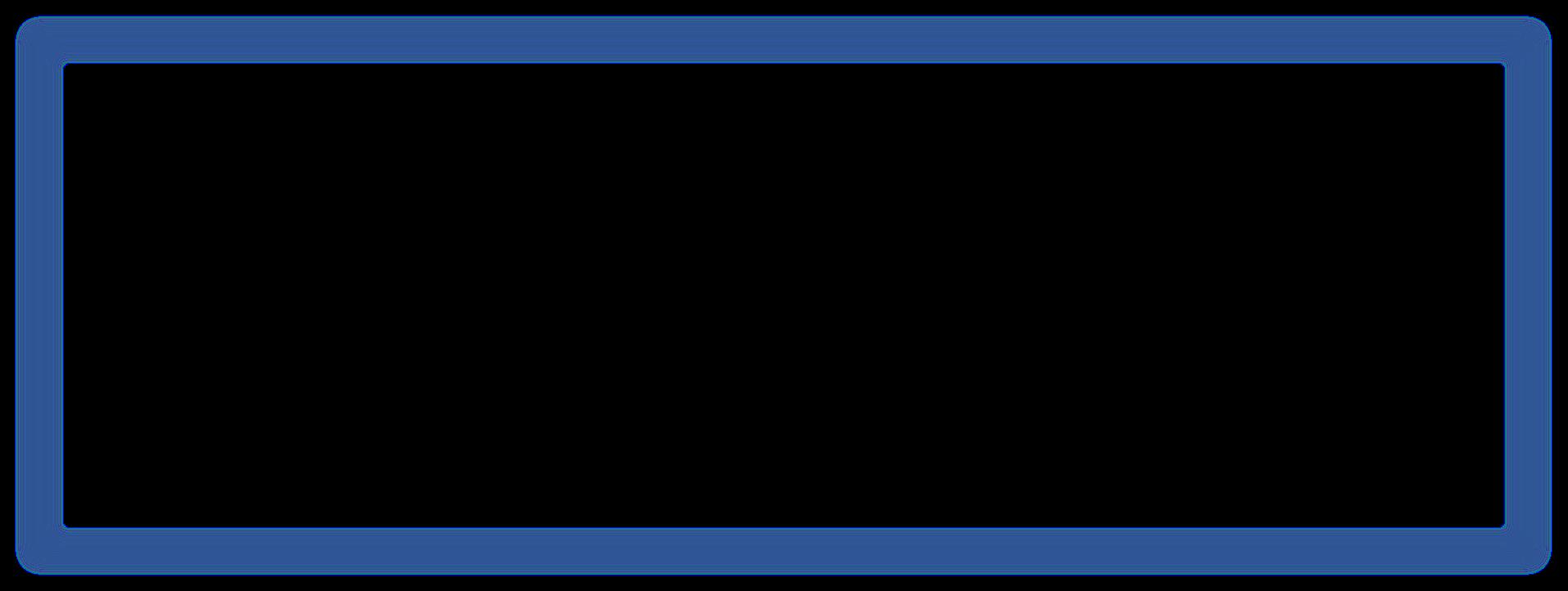

• It can radiate a large surface of the body due to large diameter of the beam
4(1): 000191
1. Dimitrios S. Recommendations of Polarized Polychromatic Non-Coherent Light (Bioptron Light) in the Management of Musculoskeletal Conditions. Ann Physiother Occup Ther 2021,
Bibliography
Rheumatoid Arthritis
Gallacchi G (1993) Comparative Study on the Efficacy and Tolerance of Two Different Light Therapy Devices (BIOPTRON Device and Philips Lamp) Used to Treat Patients Suffering From Localized pain States. (Unpublished) Karadzic M, The Polarized Light at the treatment of Rheumatoid Arthritis. (Unpublished)
Stasinopoulos I Rheumatology and rehabilitation entre. pp 2 10 (Unpublished)
Osteoarthritis/Gonarthrosis
Abramovich, S. G., Drobyshev, V. A., Koneva, E. S., & Makhova, A. A. (2020). The efficacy of the comprehensive use of naphthalan and non-selective chromotherapy in the treatment of patients with gonarthrosis. Drug Research, 70(04), 170-173.
Low back pain
Mihaylova, Mariyana & Ruseva, Zhenya & Filkova, Silvia. (2017). The effect of polarized polychromatic non-coherent light (Bioptron) therapy on patients with lower back pain. Scripta Scientifica Salutis Publicae. 3. 23. 10.14748/sssp.v3i1.2165.
Shiryan, G.T., Amin, F.S. & Embaby, E.A. Effectiveness of polarized polychromatic light therapy on myofascial trigger points in chronic non-specific low back pain: a single blinded randomized controlled trial. Bull Fac Phys Ther 27, 33 (2022). https://doi.org/10.1186/s43161 022 00085 9 (Medolight)
Iacob, George Sebastian & Pantyo, Valerij & Diana, Vrabie & Zelenovic, Milan & Alexandru, Măzăreanu. (2022). Short Term Therapeutic Effects Of Bioptron Light Therapy And Dry Needling For The Treatment Of Low Back Myofascial Pain In Amateur Sport Players. (Medolight)

Neck and shoulder pain
M.F.Ballyzek, V.Vesovic Potic, X.He, A.Johnston: Efficacy of polarized, polychromatic, non coherent light in the treatment of chronic musculoskeletal neck and shoulder pain. Unpublished material, BIOPTRON AG, Wollerau, Switzerland (2005)
Scar Tissue
Abd Elrashid, N. A., Sanad, D. A., Mahmoud, N. F., Hamada, H. A., Abdelmoety, A. M., & Kenawy, A. M. (2018). Effect of orange polarized light on post burn pediatric scar: a single blind randomized clinical trial. Journal of Physical Therapy Science, 30(10), 1227-1231.
Abd El Rashid NA, Sanad DA, Ayoub HS, Elhenawy AN. Effect of orange polarized light on Metacarpophalyngeal range of motion in pediatric hand burn: a single blind randomized trial. Bioscience Res. 2019;16(3):2417 22.
Carpal Tunnel Syndrome
Raeissadat SA, Rayegani SM, Rezaei S, Sedighipour L, Bahrami MH, Eliaspour D, Karimzadeh A. The effect of polarized polychromatic noncoherent light (bioptron) therapy on patients with carpal tunnel syndrome. J Lasers Med Sci. 2014 Winter;5(1):39 46. PMID: 25606338; PMCID: PMC4290517. (No difference)
Stasinopoulos, D., Stasinopoulos, I., & Johnson, M. I. (2005). Treatment of carpal tunnel syndrome with polarized polychromatic noncoherent light (Bioptron light): a preliminary, prospective, open clinical trial. Photomedicine and Laser Therapy, 23(2), 225 228.
Dimitrios, S., & Stasinopoulos, L. (2017). Treatment of carpal tunnel syndrome in pregnancy with polarized polychromatic non coherent light (Bioptron light): a preliminary, prospective, open clinical trial. Laser therapy, 26(4), 289 295. Stasinopoulos I Rheumatology and rehabilitation entre. pp 2-10 (Unpublished, repeat)
Bibliography
Tendinopathies
Lateral Epicondylitis
Stasinopoulos, D. (2005). The use of polarized polychromatic non-coherent light as therapy for acute tennis elbow/lateral epicondylalgia: a pilot study. Photomedicine and Laser Therapy, 23(1), 66-69. (case series)
Stasinopoulos, D., Stasinopoulos, I., Pantelis, M., & Stasinopoulou, K. (2009). Comparing the effects of exercise program and low-level laser therapy with exercise program and polarized polychromatic noncoherent light (bioptron light) on the treatment of lateral elbow tendinopathy. Photomedicine and laser surgery, 27(3), 513 520.
Stasinopoulos, D., & Stasinopoulos, I. (2006). Comparison of effects of Cyriax physiotherapy, a supervised exercise programme and polarized polychromatic non coherent light (Bioptron light) for the treatment of lateral epicondylitis. Clinical Rehabilitation, 20(1), 12-23.
Dimitrios, S. (2019). The Effectiveness of Polarized Polychromatic Non-Coherent (BIOPTRON) Light in the Management of Acute Lateral Elbow Tendinopathy: A Case Report. (case report)
Patellar Tendinopathy
Stasinopoulos, D. (2020) The effectiveness of polarized polychromatic non-coherent (BIOPTRON) light in the management of acute Patellar Tendinopathy. A case report. ARC Journal of Clinical Case Reports. Volume 6, Issue 2, 2020, PP 10-13 ISSN No. (Online) 2455-9806 DOI: http://dx.doi.org/10.20431/2455-9806.0602002 (case report)
Rotator Cuff Tendinopathy
Dimitrios S, Antonis C, Dimitrios L (2020) The Effectiveness of Polarized Polychromatic Noncoherent Light (Bioptron Light) In Patients with Chronic Rotator Cuff Tendinopathy. A Clinical sTrial. J Phy Fit Treatment & Sports 7(5): 555-724.

Musculoskeletal Injuries
Stasinopoulos, D., Papadopoulos, C., Lamnisos, D., & Stasinopoulos, I. (2017). The use of Bioptron light (polarized, polychromatic, non-coherent) therapy for the treatment of acute ankle sprains. Disability and rehabilitation, 39(5), 450-457. (ankle sprain)
Petrovic, D., Zlatkovic-Svenda, M., & Lazovic, B. (2018). Could the complex regional pain syndrome (Sudeck atrophy), emerged as a distal radius at the typical site fracture complication, be prevented by physical therapy?. Annals of Physical and Rehabilitation Medicine, 61, e114. (Sudeck atrophy)
Reviews
Hass HL. Die Wirkungen des BIOPTRON Lichtes in der Rheumatologie [The effect of BIOPTRON light in rheumatology]. Krankenpfl J. 2000 Dec;38(11 12):396 7. German. PMID: 11272991. Rheumatology Nicolaou V, Stasinopoulos D, Lamnisos D. The Effectiveness of Polarized Light in Musculoskeletal, Skin Problems and Burns. 2020 - 10(2). AJBSR.MS.ID.001492. DOI: 10.34297/AJBSR.2020.10.001492. Dimitrios S. Recommendations of Polarized Polychromatic Non-Coherent Light (Bioptron Light) in the Management of Musculoskeletal Conditions. Ann Physiother Occup Ther 2021, 4(1): 000191
Taradaj, J. What Is the Evidence-Based Physiotherapy Level for Polarized Polychromatic Non-Coherent Light Applications? A Narrative Review. Physiotherapy Review, 25(1), 6-11.



















































































 Raeissadat SA, Rayegani SM, Rezaei S, Sedighipour L, Bahrami MH, Eliaspour D, Karimzadeh A. The effect of polarized polychromatic noncoherent light (bioptron) therapy on patients with carpal tunnel syndrome. J Lasers Med Sci. 2014 Winter;5(1):39 46. PMID: 25606338; PMCID: PMC4290517.
Raeissadat SA, Rayegani SM, Rezaei S, Sedighipour L, Bahrami MH, Eliaspour D, Karimzadeh A. The effect of polarized polychromatic noncoherent light (bioptron) therapy on patients with carpal tunnel syndrome. J Lasers Med Sci. 2014 Winter;5(1):39 46. PMID: 25606338; PMCID: PMC4290517.






































